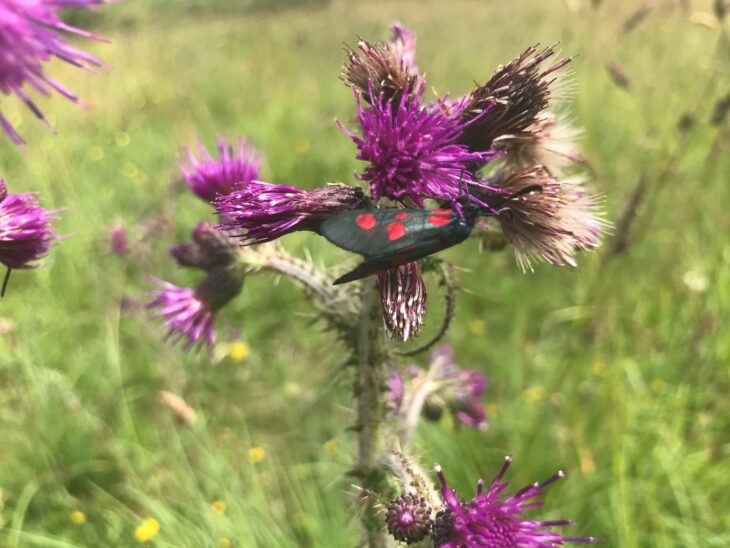Blooming meadows and booming biodiversity
,

A key objective of COP26 is “adapt to protect communities and natural habitats”. Through local, national and international collaboration this is a chance to make a real change. Cumbernauld Living Landscape is committed to restoring ecosystems, which will protect them, and us, from the ongoing effects of climate change.
For example, as the globe gets warmer invertebrates will hatch earlier, which can lead to extensive crop damage from so-called ‘pest’ species. That could well mean greater dependence on pesticides, which lead to biodiversity loss as they also kill the crucial pollinators that we rely on to grow our food. The chemicals in pesticides also accumulate in the food chain, affecting the birds and mammals that eat the invertebrates.
To protect biodiversity Cumbernauld Living Landscape volunteers have been planting nectar-rich plug plants at several locations such as St Maurices, Netherwood and Ravenswood. Three meadows were also scythed and the cut grass removed to reduce nitrogen in the soil providing the best conditions for the wildflowers to grow. Wildflower seeds were collected on-site and scattered, replenishing the meadow for spring.
Wildflower meadows make a perfect habitat for invertebrates due to their supply of rich nectar and pollen. The meadows will attract an abundance of pollinators to the Cumbernauld area, including butterflies, moths, bumblebees and wasps. In addition, the wildflowers will attract other insects like ladybirds, parasitic wasps and lacewings which control crop-eating insects like aphids, thrips, mealybugs and whitefly.
If you’re a gardener please try to use natural ways to remove ‘pests’ from your garden, rather than pesticides, to help protect our biodiversity. Additionally, you could plant nectar-rich species that will encourage their natural enemies to your garden. Another method of encouraging pollinators and your ‘pests’’ natural enemies is creating bug hotels. Ladybirds and lacewings can be attracted by constructing a box from twigs, pinecones and spare wood. Raisins or a mixture of honey, water and yeast placed inside will lure them in. These small changes to your garden will increase biodiversity and have a wider effect on the environment.
